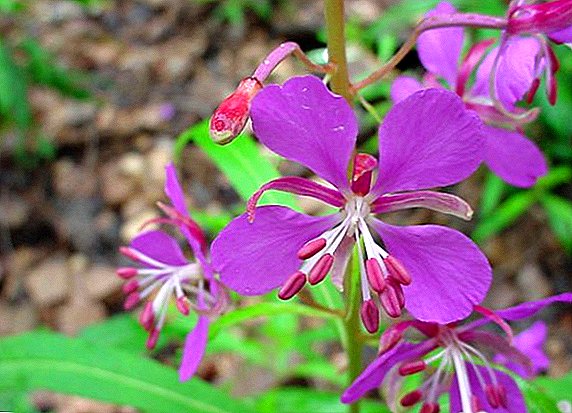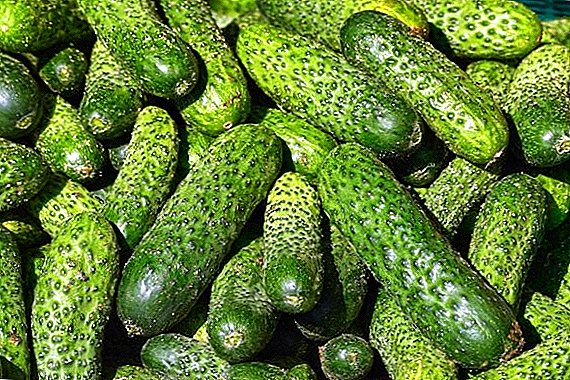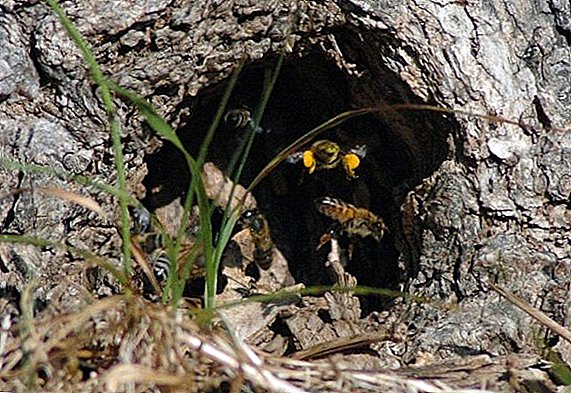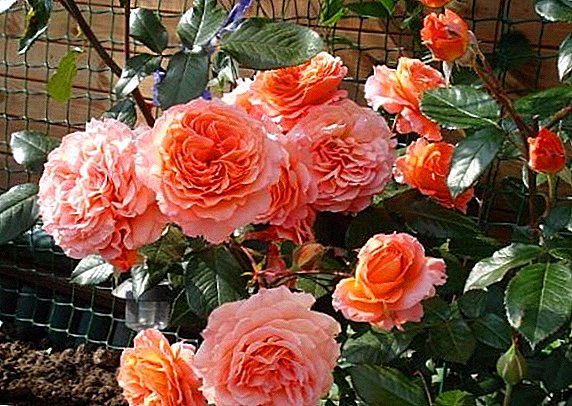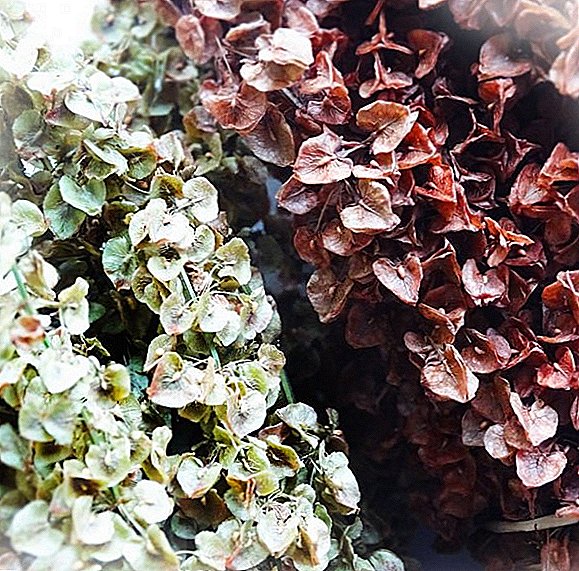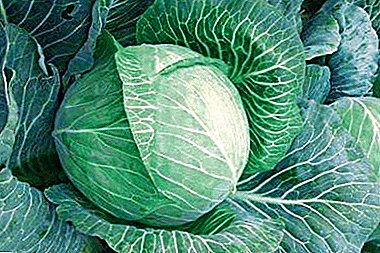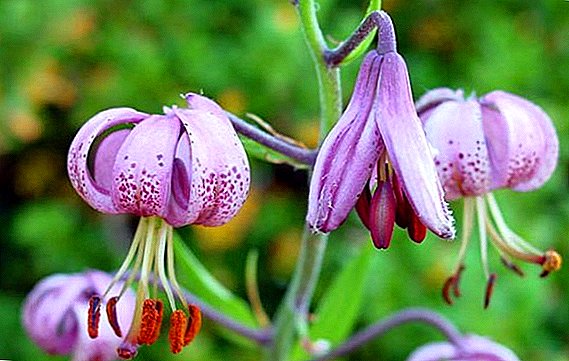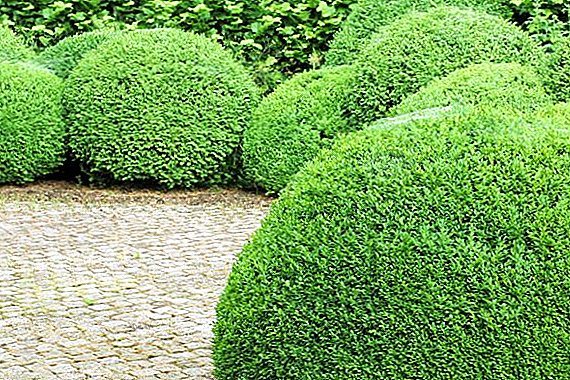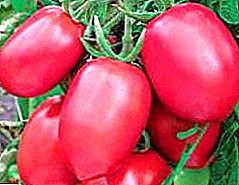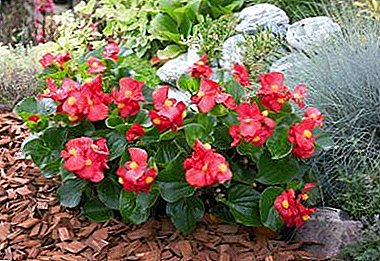
Tuberous begonia blooms very bright and beautiful. Naturally, it attracts the attention of many lovers of flora and makes them want to get this plant in their collection. Moreover, it is easy to do this by applying the favorite and effective method of reproduction - grafting.
After reading this article, you will learn what methods of reproduction of the tuber begonia exist and why grafting is the most popular among them, how to prepare the plant for reproduction, how to plant and root the cuttings. We will also tell you what to do if you encounter a number of problems when growing begonias from cuttings.
Breeding methods
Tuberous begonia breeds in the following ways:
- seeds;
- cuttings;
- tubers or parts thereof.
How to grow the ampelous begonia from cuttings and seeds, as well as further care of the plant, read here.
Can I use grafting?
One of the most popular among growers is the method of propagation. This method is simple (even for beginners in floriculture), fast (the first flowers in spring breeding will bloom in August), while grafting, all signs of the mother plant (color, leaf color, flower shape and size, etc.) are preserved.
Reference! The cutting is the separated part of the plant (leaf, sprout), and grafting is vegetative reproduction using a cutting.
General rules for breeding flowers
The cuttings can be performed in spring during the germination of tubers and in the fall before transplanting begonias from open ground. Depending on the time of year, certain nuances of this process are determined.
So begonia tubers before spring cutting should be taken from the wintering groundwhere they stayed for at least 3 months already in early January (how to properly maintain the tuberous begonia in the winter, read here). Then put them in a container with the soil, leave for several days at room temperature, regularly pouring water to restore the water balance. In about a month, shoots will begin to appear, which can be grafted after the third leaf appears on them.
The fact that the plant ampella begonia, as it multiplies, as well as about caring for it, read our material.
Preparation of plant parts
 In the spring after sprouting begonia tubers, several cuttings with 3 leaves and 10–12 cm long are separated from the tuber. It is important to leave at least one shoot on the tuber for the further development of the mother plant. Cut areas on the tuber are covered with charcoal or ash, and the cutting of the cutting can be treated with any root formation stimulant. A few hours of cuttings should be dried in the open air.
In the spring after sprouting begonia tubers, several cuttings with 3 leaves and 10–12 cm long are separated from the tuber. It is important to leave at least one shoot on the tuber for the further development of the mother plant. Cut areas on the tuber are covered with charcoal or ash, and the cutting of the cutting can be treated with any root formation stimulant. A few hours of cuttings should be dried in the open air.
And in early September, before digging up the tubers from an adult plant, the upper part of the stem with leaves is cut off. A healthy, strong, no visible damage, non-flowering shoot of 8–12 cm long is chosen. The shoot is cut from the begonia bush with a sharp knife obliquely. The cut must be below the node, and on the shoot there must be a leaf or a pair of leaves. The cutting is dried, processed by the stimulant and planted for rooting.
What is the best way to root a flower? Rooting in water is not the best option for the tuberous begonia, since cuttings in most cases rot and die. therefore most often young shoots root in special peat tablets or in the ground.
Landing
For planting a young plant, you must use the soil purchased in the store, or one of the variants of the substrate prepared with your own hands, which must be disinfected with fungicides or thermally:
- Sod and deciduous soil, sand, humus in the ratio of 2: 1: 1: 1.
- 2 parts of peat, 2 parts of leafy ground, 1 part of sand and 0.5 parts of manure.
- Greenhouse land, peat, sand and manure in equal proportions.
As a container for the tuberous begonia it is better to use a low and shallow pot.: the distance from the edge of the pot to the tuber should not exceed 2 cm. We should not forget that the bottom two-centimeter layer must necessarily be a drainage of expanded clay or broken brick.
The best method of planting for young seedlings rooting in the ground is the method of transshipment: the plant comes from the tank and, without shaking off an earthy coma, is placed in a new pot. The top layer of soil at the stem is crushed by hands, the plant is watered and put in its place.
Details on how to plant begonia in open ground and in the pot, as well as what kind of care is required for the plant, read our material.
Rooting
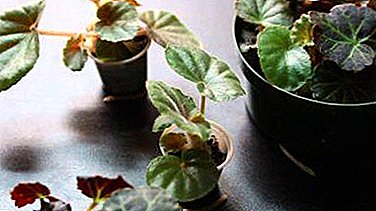 Rooting is the process of the emergence of the root system of a shoot cut from the mother plant.
Rooting is the process of the emergence of the root system of a shoot cut from the mother plant.
- For rooting cuttings, peat with sand should be used as a substrate in equal proportions or in a 1: 3 ratio. As an option: mix 1 part leafy ground, 1 part peat, 3 parts sand.
- Substrate should be well moistened.
- Embed cuttings in the substrate by 2 - 3 cm.
- Everything is good to water.
- Place the container with the handle in the "greenhouse": rooting simply requires high temperature and humidity. Every day should open the "greenhouse" and air cuttings to avoid their decay.
As a "greenhouse" you can use a plastic bag, a plastic food container with a tight-fitting lid or a cut plastic bottle.
- It is necessary to place the container with the handle in a bright place, but without direct sunlight, to maintain a constant temperature of + 20C - + 22C.
- After the first roots appeared (after about 1 month), the greenhouse can be removed.
- Once the plant is strong, it can be transplanted into a permanent pot.
Similarly rooted and cuttings are cut in the fall.
In autumn cuttings, begonia shoots are planted in pots with a substrate to a depth of 4 cm and kept until spring as houseplants with moderate watering. It is possible that the stalk will drop the leaves for the winter., but the viability of the part of the shoot, which is in the ground, will remain. In spring, the rooted cuttings are transplanted into a new container, and in the summer, the young plant will delight with its first flowers.
How to care?
The first 3 days should be kept young seedling in the shade, and then rearranged in a bright place, but it should avoid direct sunlight on the foliage of a young plant. The ideal option is the north, north-west, northeast windows. It is believed that a 16 - hour light day is needed for begonia, therefore, in the autumn - winter period, seedlings simply need more light to fitolampa.
 The optimal temperature for the growth of begonias - + 20C - + 22C. A young plant is watered often, but little by little. It is important not to allow excessive moisture in the substrate, otherwise the begonia will die from rotting. Spraying is not recommended: begonia does not like water droplets on leaves and flowers.
The optimal temperature for the growth of begonias - + 20C - + 22C. A young plant is watered often, but little by little. It is important not to allow excessive moisture in the substrate, otherwise the begonia will die from rotting. Spraying is not recommended: begonia does not like water droplets on leaves and flowers.
To increase the level of humidity in hot and dry weather, you can place a container with water next to the pot, or place the pot in a pan covered with expanded clay, which must be watered periodically with water.
Top dressing is made by complex mineral fertilizers purchased in flower shops, from spring to autumn 1 - 2 times a month, and the first time after rooting the young plant must be fed with azat-containing fertilizers for active growth of foliage and roots.
- Bolivian;
- tuberous;
- ampelous.
Possible diseases
- The leaves on the handle turned yellow and fell off.
This is nothing wrong, it is a natural process. If the plant is safely rooted, then be sure to release new foliage.
- Rotting cuttings.
This phenomenon is possible with excessive watering. Also, do not forget about the daily airing of "greenhouses", in which the rooting of the plant.
- Young ampelous begonias show signs of infectious diseases..
For the prevention of this phenomenon, it is recommended to disinfect the soil, the pot into which the cuttings will be planted (fungicide treatment, heat treatment). If, however, the plant is “sick”, then it must be treated with special preparations, be sure to isolate it from healthy plants in a well-ventilated room.
- Sprouts drawn out, become long and thin.
The plant does not have enough light. This problem can be solved by moving the pot with the young begonia to a lighter place.
- Slow development of a young plant.
Most likely the shoots do not have enough nutrients. The solution is fertilization in the ground.
Details on why the tuberous begonia does not bloom and what to do, as well as what diseases can destroy a flower, can be found here.
Tuberous begonia is considered the most unpretentious type among the Begonia. And the process of grafting this plant does not take much time grower and does not require its large material and energy costs. But the result will exceed all expectations: the plot will be decorated with lush flowering of not one, but several plants.


